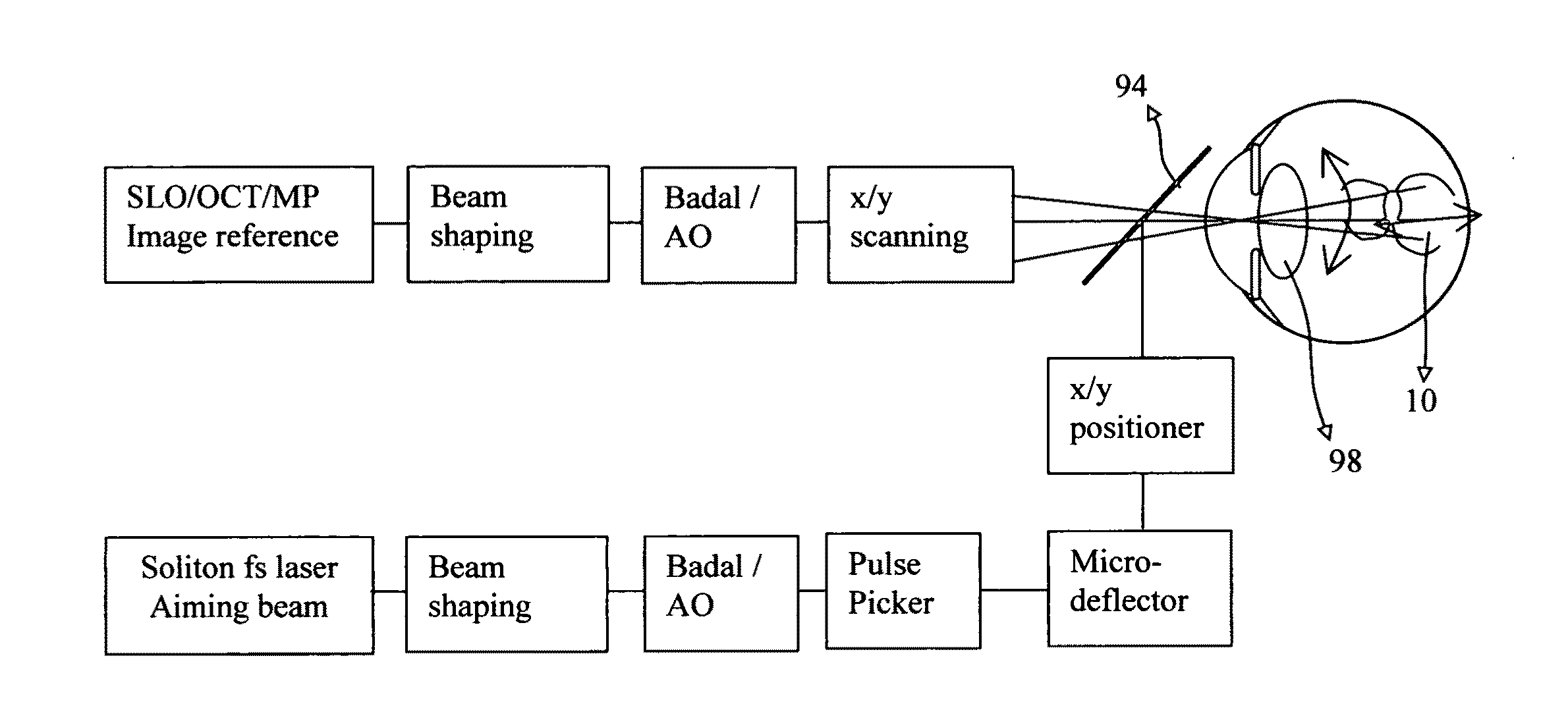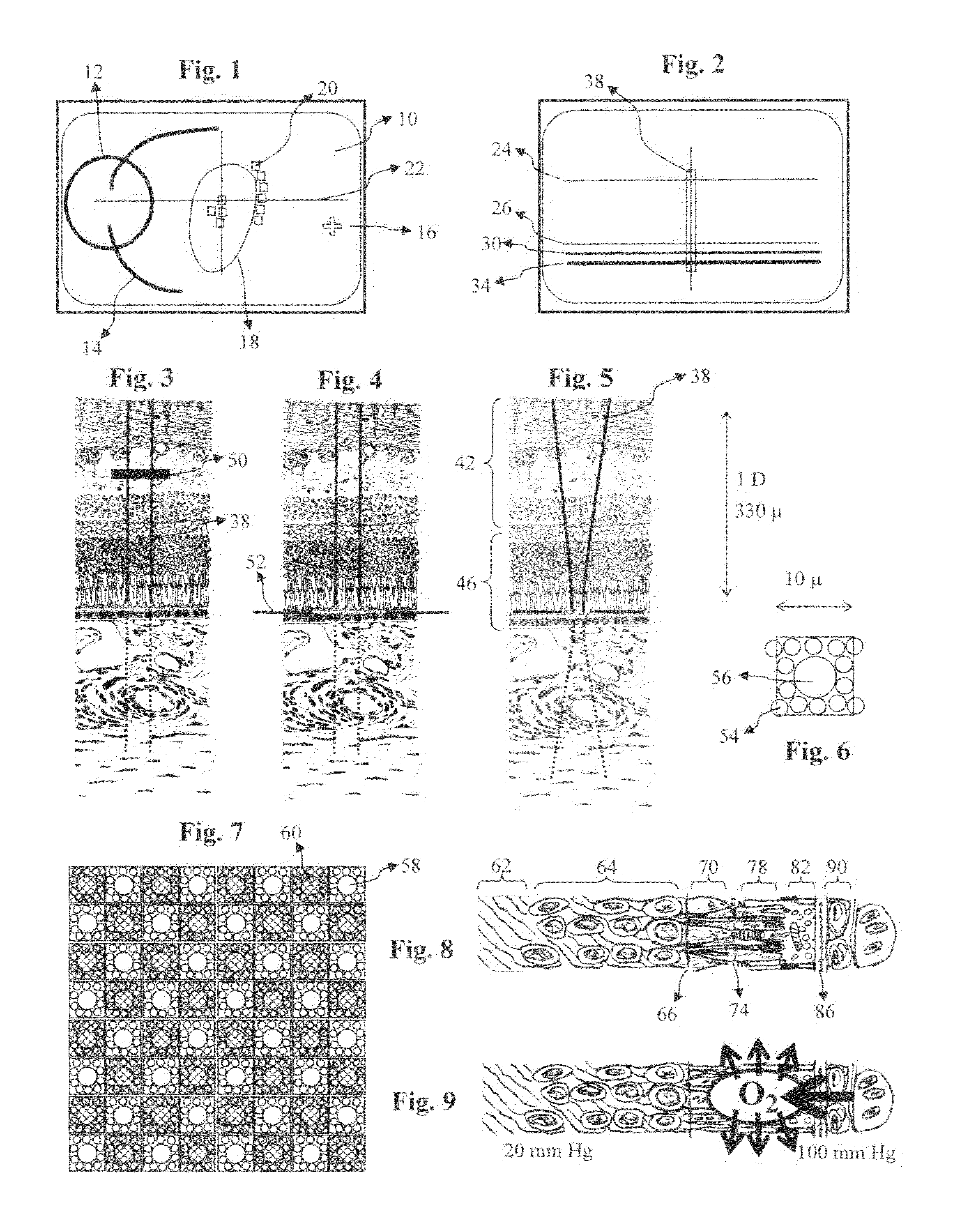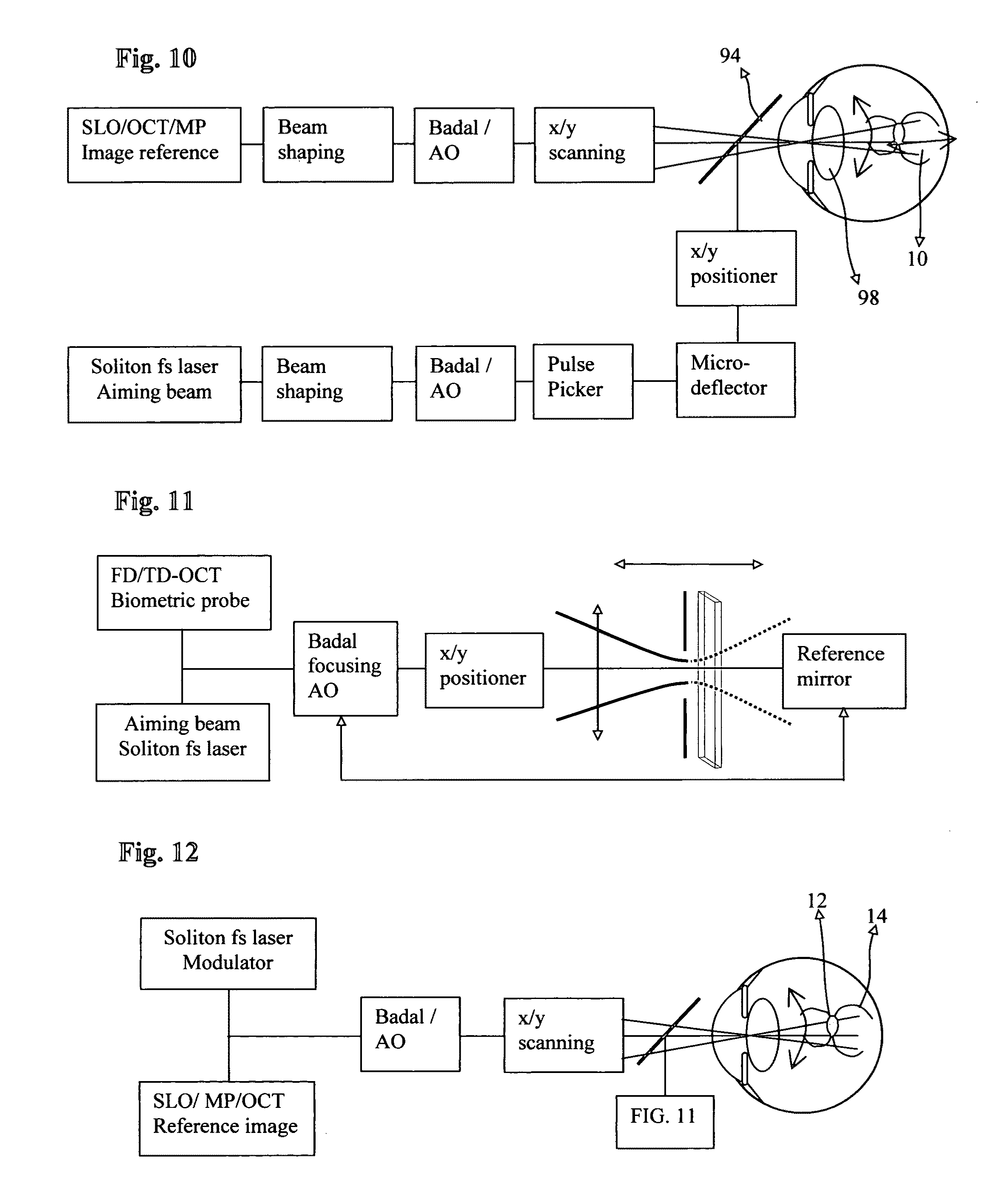Electronic ophthalmoscope for selective retinal photodisruption of the photoreceptor mosaic
- Summary
- Abstract
- Description
- Claims
- Application Information
AI Technical Summary
Benefits of technology
Problems solved by technology
Method used
Image
Examples
Embodiment Construction
[0093]Representative embodiments of the electronic ophthalmoscope have been described in U.S. Pat. Nos. 7,374,287 and 7,703,922. The art of combining such instrument with various therapeutic light sources of different pulse duration has been described in U.S. Pat. Nos. 5,892,569, 5,923,399, 5,943,117, 6,186,628 and 6,789,900.
[0094]The principles and applications of scanning laser ophthalmoscopy, optical coherence tomography and microperimetry are also described in detail in the publications referenced before. Below we describe the operational environment of an ophthalmoscope that is capable of selectively disrupting in a controlled manner a pre-defined part of the photoreceptor mosaic of the retina or Bruch's membrane.
I. Anatomical and Physiological Considerations
[0095]The photoreceptor-RPE complex is by far the most active metabolic tissue in the human body, and even more so in the macular area. A huge volume of oxygen is needed to drive the Wald's visual cycle and to maintain the...
PUM
 Login to View More
Login to View More Abstract
Description
Claims
Application Information
 Login to View More
Login to View More - R&D
- Intellectual Property
- Life Sciences
- Materials
- Tech Scout
- Unparalleled Data Quality
- Higher Quality Content
- 60% Fewer Hallucinations
Browse by: Latest US Patents, China's latest patents, Technical Efficacy Thesaurus, Application Domain, Technology Topic, Popular Technical Reports.
© 2025 PatSnap. All rights reserved.Legal|Privacy policy|Modern Slavery Act Transparency Statement|Sitemap|About US| Contact US: help@patsnap.com



